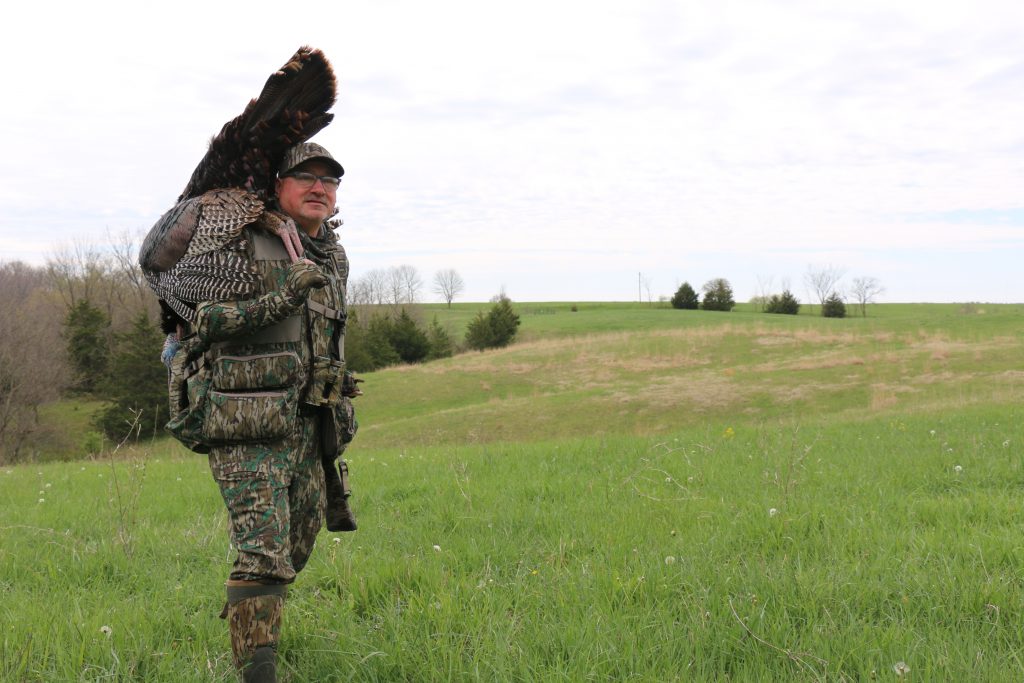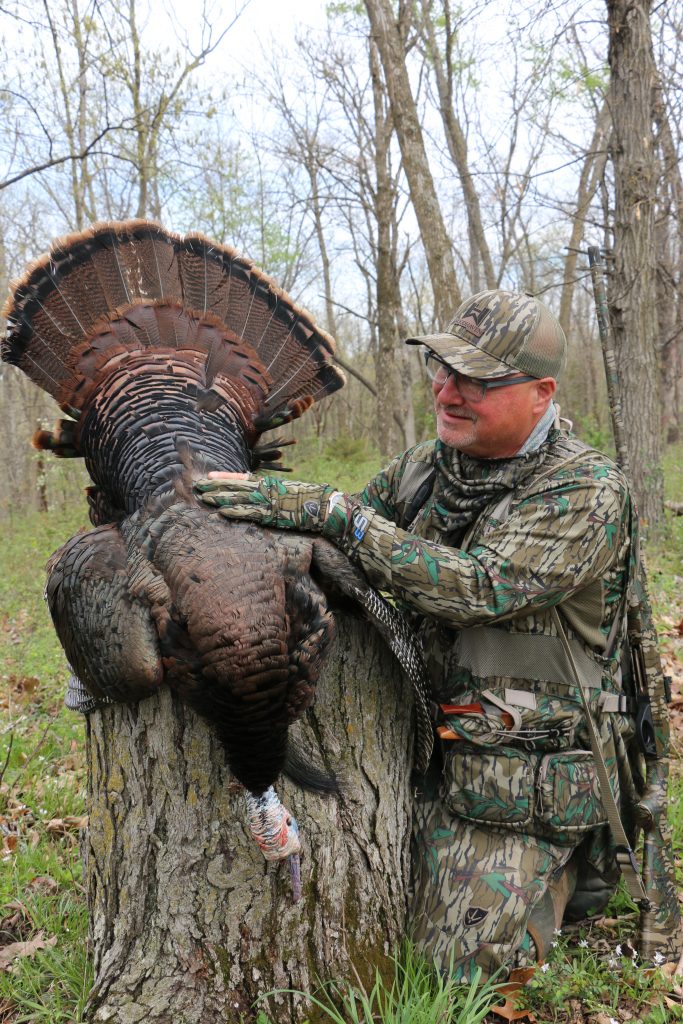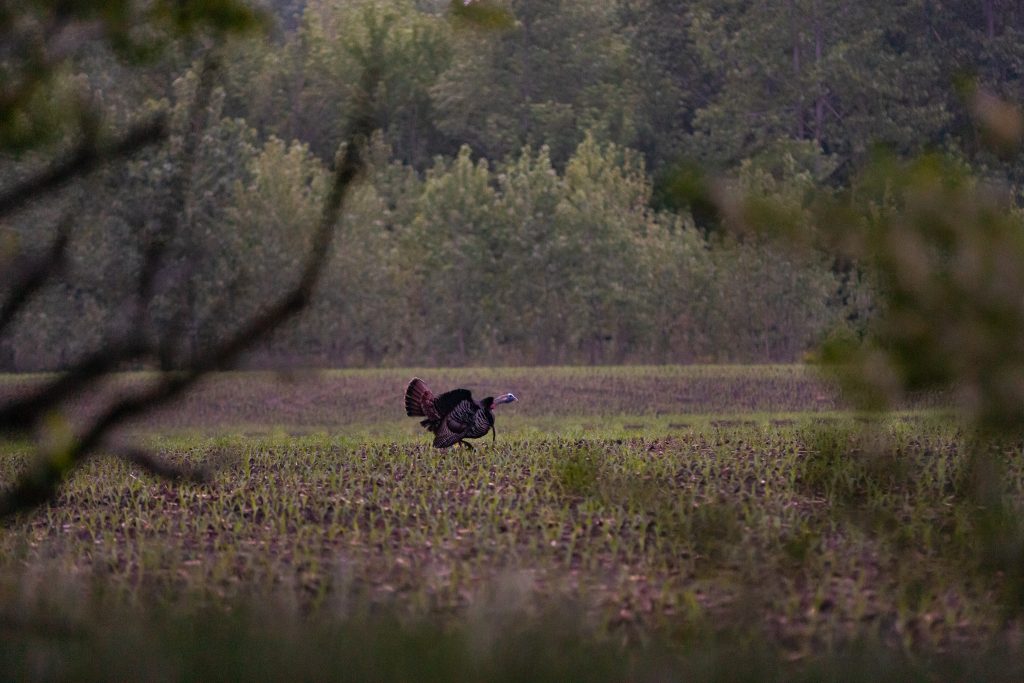Challenging Big-Country Easterns
Western-like terrain can spell trouble for hunters east of the Mississippi. But a recent Missouri hunt illustrates a careful strategy that can help you tag wide-open gobblers.
Eastern turkeys conjure up images of longtimbered ridges or dark river bottoms. But as many veteran hunters know, Easterns also love open spaces. And in some types of terrain, that affinity for big fields or pastures can create problems.
The solution lies in how you approach those turkeys, and sometimes, your strategy might resemble tactics popular for Western hunting. That thoughtful approach can spell the difference between success and the sinking feeling of watching open-country birds sprint for safety.
Roost Hunts: Getting Under Them
Northern Missouri provides a classic example of open Eastern terrain, as sprawling cattle pastures and bottomland ag fields stretch across the region, interspersed with timbered ditches and hollows. The area has been a turkey hunting hotspot for decades, but those big open areas have created a few headaches, too.
That was on full display one mid-April 2024 morning, as I joined World champion and WoodHaven Custom Calls pro-staffer Steve Stoltz during the first week of Missouri’s season. Stoltz had roosted five gobblers the previous evening, but the birds were in a thin strip of open woods surrounded by hay fields on two sides and a large stock pond to the south. Getting close for a fly-down hunt without being busted would be challenging.
“There are two trees off the edge of the woods, and we’ll have to set up there and set the decoys where the turkeys can see them,” Stoltz said. “And we’ll have to get in there in the black dark.”
So we set our alarms a half-hour earlier and were walking to the woods long before daybreak, taking care to be as quiet as possible. Stoltz set out two fakes, and we settled into our tight hide, prepared to wait a while in the dark. As the first gray glimpses of dawn illuminated the horizon, several gobbles echoed through the woods. And minutes later, shuffling wings told us several birds had flown down.
Then, two gobblers sailed across the field about 70 yards from us, landing about 30 degrees to my right. One broke into strut, and they started a slow march toward us while I struggled to slowly ease my gun toward them without getting caught. Another gobbler solved the problem, however, by emerging from the woods to our left and quickly walking within easy range. At the gunshot, the other longbeards bolted, and we let them be. The sun had barely appeared and we’d solved one riddle posed by open-country Easterns.
Daytime Hunts: Terrain and Approach
As bright sun burned off the morning dew, Stoltz steered his truck toward another farm. The tract had more timber than our morning hotspot, but it was surrounded by wide ag fields and CRP grass — the perfect recipe for being seen while on approach. Before stopping, Stoltz drove around the property and glassed open areas, hoping to see a strutter or two. After spotting nothing, he parked and prepared to go in.

Stoltz planned to strike a patch of timber bordered by a creek bottom that rose up to a high point. Even during our sneak in, he constantly glassed ahead and used the roll of the land to conceal our approach from unseen birds. When we got within earshot of the timber, he blew a crow call, and a gobbler responded immediately near the high point. With that, Stoltz was off, hoping to close the distance on the bird. I stayed put, as slipping tight to a turkey is typically a one-man mission.

Sprawled against a tree in the sunlight, I listened as Stoltz called and the turkey responded, each moving after a sequence or two. After a while, I could barely hear Stoltz’s yelping, and it seemed as if the turkey had drifted farther, probably along the edge of a field. But soon, the gobbles began drifting closer, and then it seemed as though the turkey was back in the timber. Minutes later, a gunshot broke the morning calm, and soon, Stoltz emerged, grinning, toting a hard-earned longbeard.
“I couldn’t get much closer to him when he was in the field,” Stoltz said. “I saw a little high spot in the bottom, and I thought, ‘That’s where I need to be to get this turkey.’ When he drifted away, I hustled over there, and then some soft calling brought him back.”
Conclusion
It sounded like the perfect hunt. Of course, we knew that it had only been possible because of a careful approach and smart positioning in that wide-open terrain. Maybe that type of hunt doesn’t match the romance of plying a tree-filled valley or a timbered creek bottom. But with two open-country Missouri gobblers in the truck bed, we were OK with that.
Missouri Turkeys Holding Steady

Missouri has always been a titan of Eastern turkey hunting, but hunters have noticed a decline in Show-Me State bird numbers since the heyday of the late 1990s and early 2000s. Still, there is good news for the future.
“Relative to peak abundance, the population is still down,” said Nick Oakley, wild turkey and ruffed grouse biologist for the Missouri Department of Conservation. “There was a noticeable decline between 2017 and 2021, but since then, we have had successively better harvests annually. We had a good production year in 2023, so I expect another good harvest year in 2025, but I would probably still classify the population as stable rather than increasing or decreasing at this point.”
Oakley said relatively dry springs and cicada hatches have helped boost reproductive success to some extent the past three years.
“I expect that has driven the increase in production and the subsequent increase in harvest,” he said.
